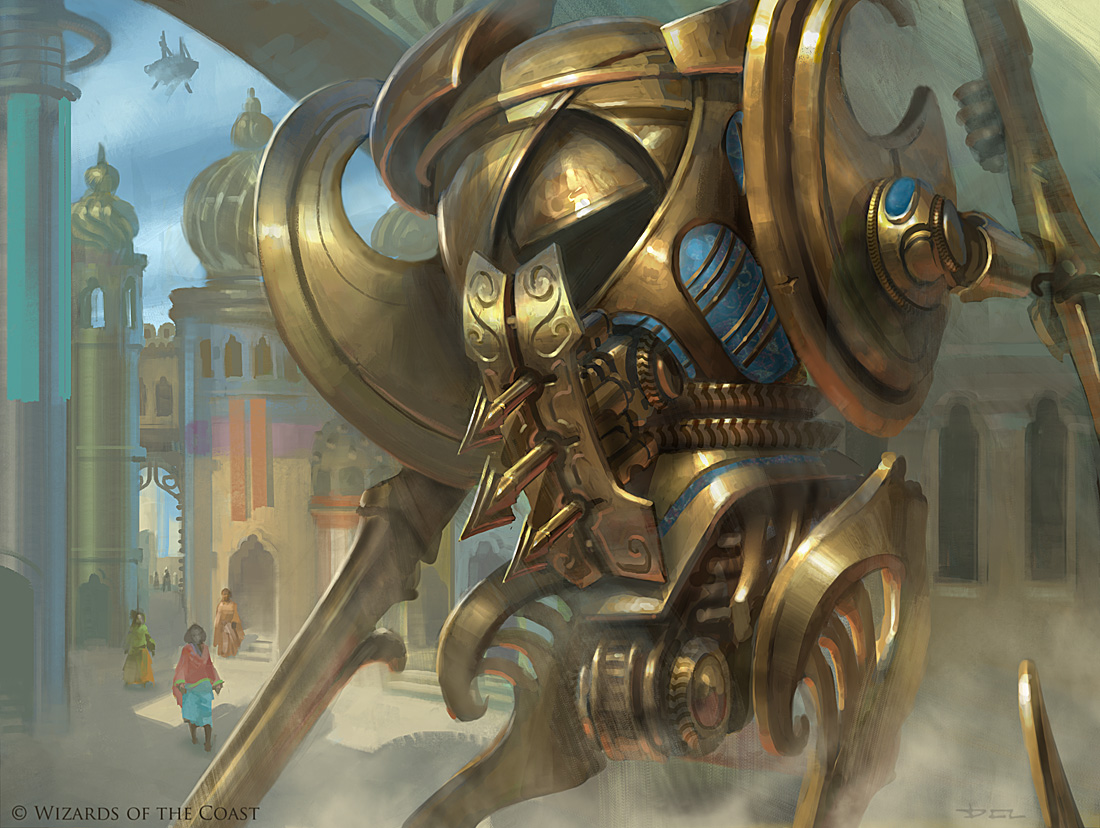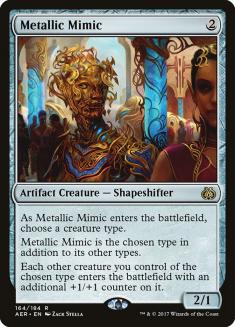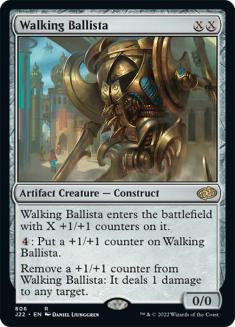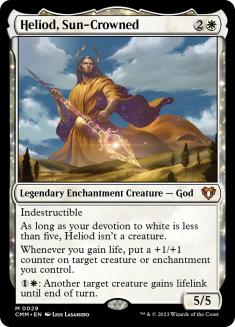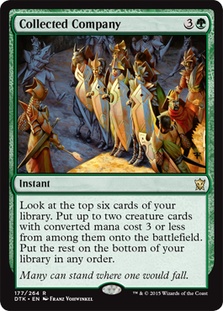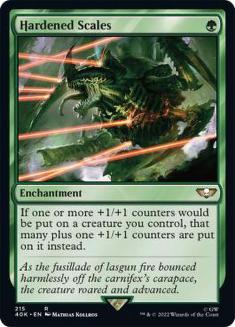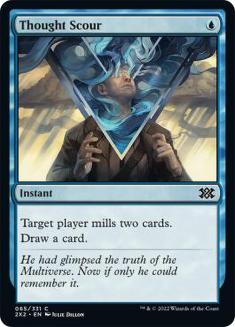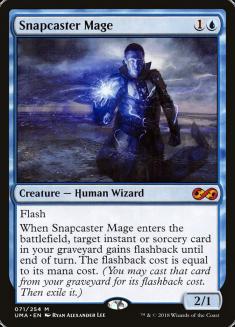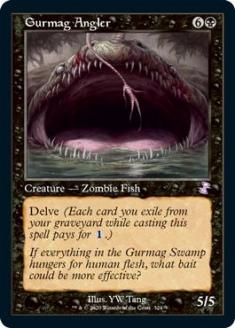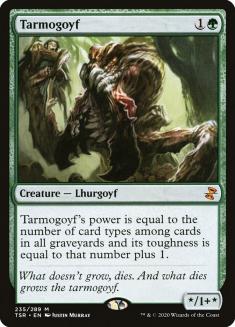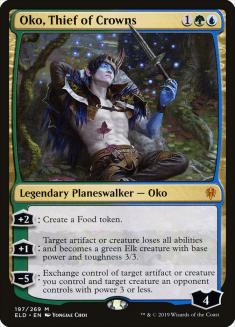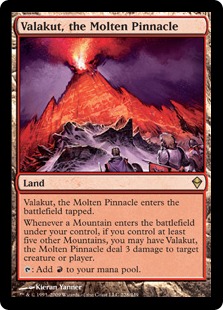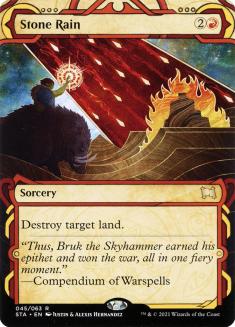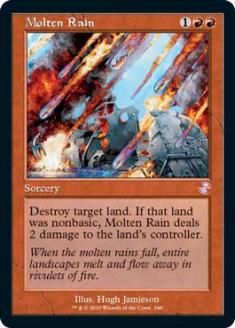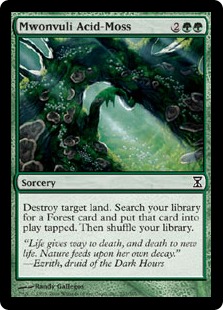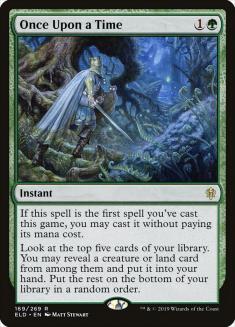It feels like forever since we’ve had a Modern tournament of note. Last time we were playing Modern on the SCG Tour, Aaron Barich was crushing a bunch of Oko-fueled Urza decks on her way to winning an Open with Golgari Yawgmoth.
Creatures (27)
- 4 Birds of Paradise
- 4 Wall of Roots
- 1 Noble Hierarch
- 4 Strangleroot Geist
- 4 Geralf's Messenger
- 4 Young Wolf
- 1 Blood Artist
- 4 Yawgmoth, Thran Physician
- 1 Cavalier of Night
Lands (21)
Spells (12)

In the time since then, there have been some bans, as well as the release of Theros Beyond Death. The latter point is more relevant than it would’ve been several years ago. It used to be a big deal when cards made their way into eternal formats, but now, cards are pushed to the point that it’s expected for Standard powerhouses to find their way into older formats.
With so many people playing in the different locations for SCG Regionals, the format is fresh, wide-open, and ripe for trying new stuff out. One of the best ways to ensure success? Don’t reinvent the wheel. Update things that are proven with new technology and adjust accordingly.
Creatures (26)
- 2 Birds of Paradise
- 3 Spike Feeder
- 1 Eternal Witness
- 4 Devoted Druid
- 3 Noble Hierarch
- 1 Walking Ballista
- 3 Vizier of Remedies
- 4 Giver of Runes
- 2 Ranger-Captain of Eos
- 3 Heliod, Sun-Crowned
Lands (19)
Spells (15)

With the drastically reduced amount of interaction in the format, creature combo is all the rage. With the redundancy of the Devoted Druid decks, they’re starting to feel like the new Infect. Rather than sinking a bunch of points into protection, decks like this are looking to simply present a lethal combo turn after turn.
There are a few versions of this deck floating around, and it hasn’t settled on a stock list just yet. This particular list is putting some stock into Thoughtseize as a preemptive disruptive tool. Past that, it has the full eight two-mana tutors, demonstrating an emphasis on consistency over a grindy tool like Collected Company. Zan Syed played a version of this list in Richmond last month that leaned more into Collected Company with Viscera Seer and Kitchen Finks to create more infinite life loops with Heliod, Sun-Crowned and Vizier of Remedies.
I’d be shocked if there wasn’t some version of this deck that succeeded over the weekend, but it isn’t the only shell that can abuse the Heliod/Feeder combo.
Creatures (29)
- 2 Birds of Paradise
- 4 Spike Feeder
- 4 Arcbound Ravager
- 4 Noble Hierarch
- 4 Hangarback Walker
- 3 Metallic Mimic
- 4 Walking Ballista
- 4 Heliod, Sun-Crowned
Lands (19)
Spells (12)
Sideboard

Leaning into combo for explosiveness is a necessary step for Hardened Scales with the banning of Mox Opal. The Mox is what gave the deck the level of explosiveness needed to justify a pile of two-drops and lands with activation costs previously, so without it, the old versions of the archetype fell a bit flat.
This deck is an example of what most aggro decks in the format have done in order to adapt: they’ve eschewed interaction and have leaned into having a better nut-draw. Similar to the recent hybrid variants of Devoted Druid / Heliod decks, this is a strategy tying synergies in with Heliod and Spike Feeder.
Metallica Mimic does a trick for this deck in the same vein as what most of the two-drops in Modern do for the Walking Ballista half of the Heliod combo.
Casting Heliod, casting a Ballista with at least two counters, and activating Heliod is usually a nine-mana move. Anafenza, Kin-Tree Spirit and Daxos, Blessed by the Sun make it so the Ballista can be cheaper to cast, speeding up the combo. Metallic Mimic and Hardened Scales do the same thing and create even more must-answer threats in the deck.
Metallic Mimic even has the benefit of justifying Collected Company in a deck that would be lacking in reasonable hits without it. Normally Hangarback Walker and Walking Ballista aren’t real hits with Company, but Mimic on Construct works for both of them.
Another benefit of Hardened Scales, on top of the traditional reasons to play the card, is that it actually leads to a kill with Spike Feeder and Heliod. Previously the two cards only gave infinite life. Now, with a Hardened Scales on the battlefield, Spike Feeder nets a +1/+1 counter each time through the loop and becomes infinitely large. This also allows the counters to be spread around, making every creature lethal.
Decks pushing the ceiling of their fastest draws is a common trend in Modern.
Creatures (13)
Lands (17)
Spells (30)

Despite Death’s Shadow feeling present lately, it seems like a lot of the decks have been playing more Tarmogoyfs than Gurmag Anglers. Why?
Simply put, the blue cards generally involve committing to taking more time and that isn’t acceptable. Having a counterspell or two makes the blue splash worth it, but for all intents and purposes, the best way to be playing Death’s Shadow right now is on the back of Nurturing Peatland and Overgrown Tomb.
Modern has become so refined and proactive that it’s hard to justify spinning wheels with a cantrip or two in a game. The resiliency and additional reactive tools offered by Snapcaster Mage aren’t as good at holding the opponent in place while Death’s Shadow chunks in for damage.
At its absolute best, Gurmag Angler has the appearance of being a similar size to Tarmogoyf for less mana, but that isn’t always the case. Gurmag Angler actually demands some quantity of mana be invested up front. The nice thing about delve spells is that the mana just doesn’t have to be on the delve spell itself. As soon as cards like Thought Scour get involved, the discount that delve spells are known for starts to be meaningfully reduced. Casting a Thought Scour doesn’t actually have any sort of immediate effect on the game in a meaningful way.
For decks as tempo-oriented as the flavors of Death’s Shadow, spending an entire mana to not impact the battlefield or the opponent’s resources is a tough pill to swallow. It’s more or less conceding that a mana has to be invested in a spell in order to enable Gurmag Angler. The games that don’t have Thought Scour? It’s not easy to cast Gurmag Angler before Turn 3.
In a format that’s defined by how condensed the games are, it’s becoming more and more necessary to lean into a threat that can be reliably developed on the second turn every game.
A big reason for these decks moving in this direction is that it isn’t feasible to try to fight decks in the mid-game anymore. Sure, other aggressive decks are going to be similarly anemic after the fourth or fifth turn, but the decks that plan to hang in that part of the game?
Creatures (14)
Lands (31)
Spells (15)

The decks that are planning on making it to the middle and late stages of the game will be able to go over the top of just about anything. Having a one-mana 12/12 isn’t worth much when Valakut, the Molten Pinnacle is creating 24 points worth of triggers in a single turn cycle.
Before it met the banhammer, Oko, Thief of Crowns opened up the idea that a Primeval Titan-focused deck could simply lean into the power of Field of the Dead and endless copies of Primeval Titan to win the game. It didn’t use Amulet of Vigor, bouncelands, or anything in that vein. It simply locked the game up with a few Elk, and then had the most busted Colossal Dreadmaw the game has ever seen to wrap the game up.
Despite Oko being gone, the deck is far from dead. It just has less incentive to play blue. With black being the best disruptive color in Modern, it’s a natural direction for the deck to look for the sideboard. For its main? Mono-green, more or less. This is the story for a few different iterations of this archetype.
Creatures (15)
Lands (30)
Spells (15)

Micah Larrow made it to the elimination rounds of a large Modern Classic a couple of weeks ago with a maindeck that is effectively the same deck, with some seasonings for taste. The differences in the deck lie in the sideboard and the methods for fighting other combo decks. Is Aven Mindcensor better at fighting other Primeval Titan decks or is it better to Cranial Extraction the key card and be done with it? The splash color isn’t settled, but the fact that there are so many takes on it, with the maindeck being this close to static, is evidence that there’s something here.
In a lot of ways, what this deck is doing is very similar to what the TitanShift decks of the past were doing. Rather than looking to the explosiveness of the aforementioned Amulet Titan cards, this Primeval Titan variant is operating under a single assumption: if you can put enough lands on the battlefield, you’ll find a way to win.
In a lot of ways, this deck feels like it has the resiliency of something like TitanShift, while also getting a bit of the land toolbox that Amulet Titan has access to.
On the other side of things are go-big decks that plan to skip ahead of the opponent in terms of development and win on the back of raw card quality:
Creatures (25)
- 4 Magus of the Moon
- 4 Bloodbraid Elf
- 4 Arbor Elf
- 2 Inferno Titan
- 4 Glorybringer
- 4 Seasoned Pyromancer
- 3 Klothys, God of Destiny
Planeswalkers (3)
Lands (20)
Spells (12)

Ponza sure has evolved over the years, hasn’t it?
Historically, the Gruul Arbor Elf / Utopia Sprawl decks used land destruction effects to keep the opponent’s development stifled while playing a proactive mid-sized ramp strategy. Glorybringer and Bloodbraid Elf aren’t the most powerful things to be doing in Modern, but they’re pretty great when the opponent is stalling on one or two lands. Now, Magus of the Moon is the only version of that effect to be found in the maindeck.
Like the other decks in this article, Once Upon a Time working as a zero-mana cantrip when enabling the deck’s most busted draws has removed most of the incentive for interaction. Instead, the deck plays a bunch of cards that are proactive and reasonably deal with permanents that die to damage. It’s hard to justify playing Molten Rain when Sakura-Tribe Scout and Death’s Shadow are two of the most popular one-drops in the format.
The incentive to play this over something like traditional Tron is similar to the reasons that make people want to play Golgari Titan over Amulet Titan. Rather than having something explosive, this archetype is operating under the assumption that its interaction is going to be effective and that playing a normal game of Magic is better than leaning into disruptable synergies for the sake of explosiveness.
Kill ‘Em
If there’s an observable trend between all of these decks and the way that they’ve changed, it’s that they’ve shifted towards killing people more quickly and putting fewer points into defense. In spite of the fact that Modern was originally touted as a Turn 4 format, this hasn’t been the case in years and it’s becoming more and more stark every set release.
The fundamental turn of Modern at this point is somewhere in the area of Turn 3 to Turn 3.5. Hell, even Cryptic Command decks have combo kills these days, and the slower Urza decks we saw from the Oko era of Modern have converted back to Thopter Foundry + Sword of the Meek builds. Pretending you can sit back and survive indefinitely isn’t realistic anymore, and in a lot of ways, trying to buy time while assembling a win isn’t going to be good enough either.
Progressing towards a concrete endgame is the way to succeed this weekend.

